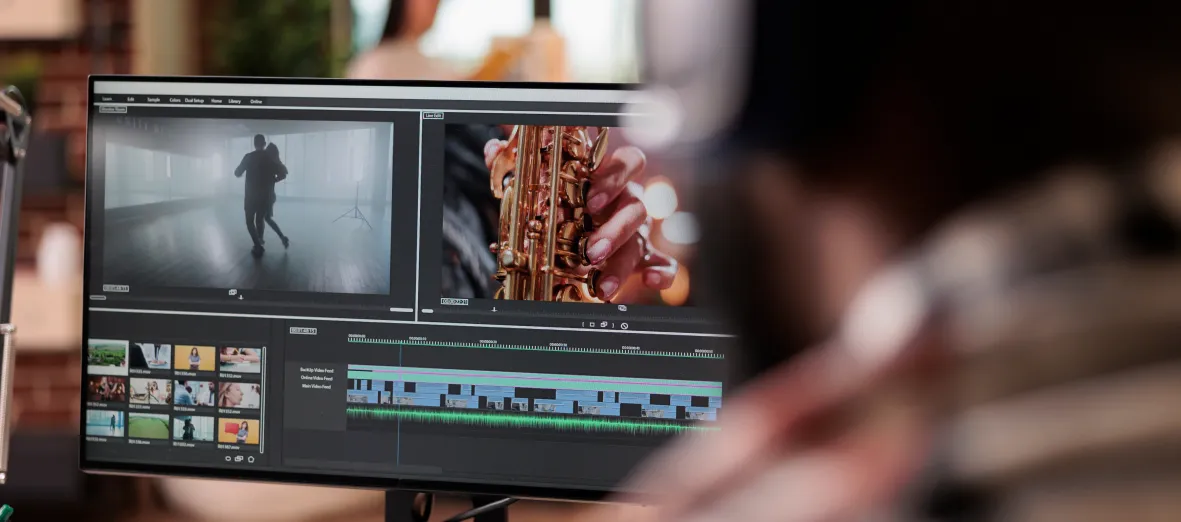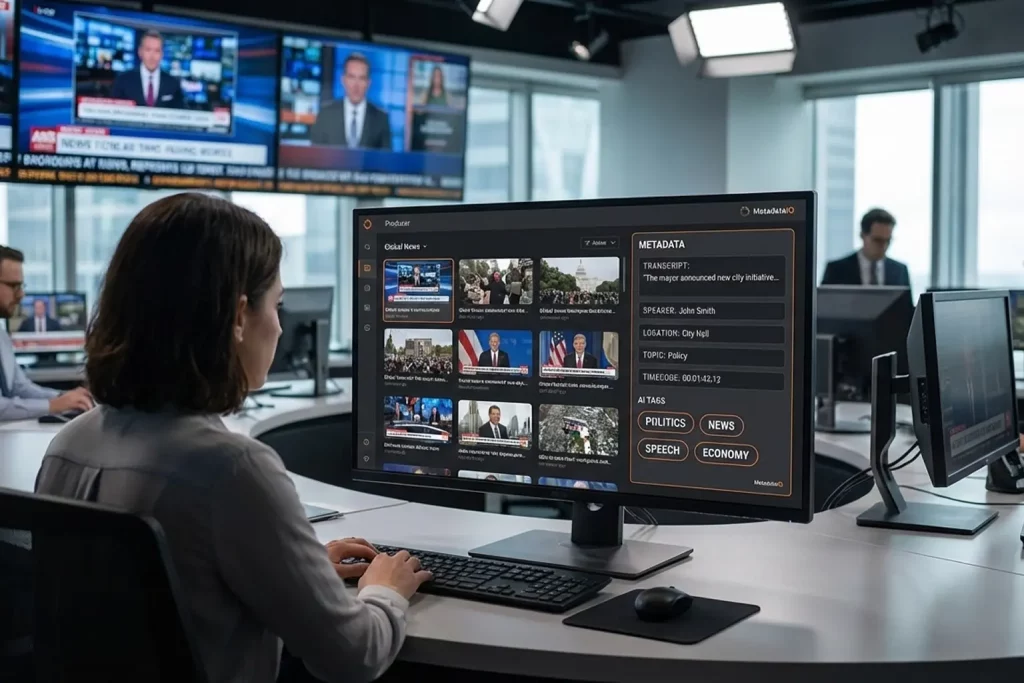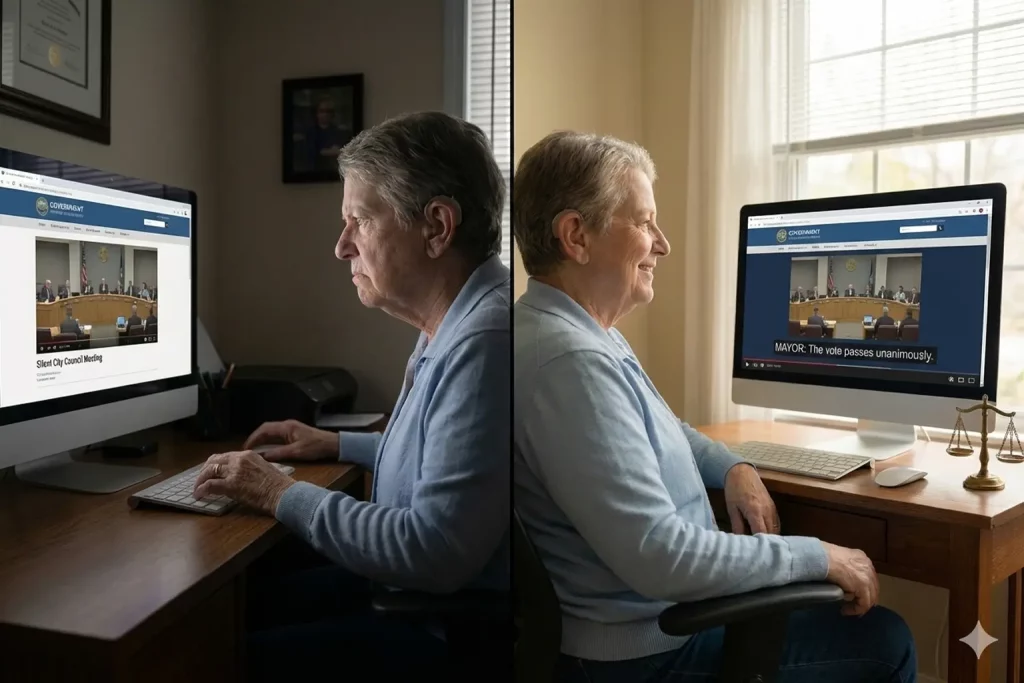In today’s digital age, automatic subtitling has become a game-changer for content accessibility, reaching diverse audiences worldwide. Whether you’re a content creator, educator, or business owner, understanding the role and importance of automatic subtitling can elevate your reach and engagement. This guide delves into what subtitling is, the benefits of automatic subtitles, and how to use them effectively.
What is Subtitling?
Subtitling is the process of displaying text on video screens to translate spoken dialogue or provide additional information. Subtitles generally reflect the spoken language, helping viewers understand content regardless of language or hearing ability.
How Automatic Subtitling Works
Automatic subtitling employs AI-powered speech recognition software to generate text for videos in real-time. This technology processes spoken words, converts them to text, and synchronizes the text to display as subtitles, often within seconds.
The Importance of Subtitling
Subtitling, mainly when automated, is vital for enhancing content accessibility. It serves both those with hearing impairments and speakers of different languages. Beyond accessibility, subtitles improve comprehension, audience engagement, and video searchability.
Accessibility and Inclusivity
Subtitles make content accessible to people with hearing impairments by displaying spoken words as text. They also help viewers who may need more clarification on the spoken language, adding inclusivity to the viewing experience.
Boosting Engagement and Retention
Studies show that subtitles can increase viewer engagement and retention. Audiences who can follow the video visually and textually are more likely to stay engaged and retain information. This is especially true for educational and corporate content.
Elevate Your Content’s Reach with Digital Nirvana’s Automatic Subtitling Services
At Digital Nirvana, we understand that effective communication transcends language barriers, technical jargon, and accessibility limitations. Our automatic subtitling services are designed to help brands, educators, broadcasters, and content creators reach a global audience easily and precisely. Leveraging advanced AI and machine learning technology, our subtitling solutions provide fast, reliable, and accurate text for your multimedia content—without sacrificing quality.
Our automatic subtitling services cover everything from standard closed captions to specialized subtitles for the deaf and hard of hearing (SDH). Each subtitle is generated and timed to seamlessly sync with your audio, ensuring viewers can fully engage with your content. We know that one-size-fits-all solutions aren’t enough, so we offer customizable subtitling formats and styles, allowing you to tailor the look and feel to fit your brand and audience preferences.
Moreover, our technology can recognize and accurately process diverse accents, dialects, and complex terminology. This allows us to provide dependable results across various industries, from corporate training videos to entertainment and e-learning platforms. When the automatic approach requires an extra touch, our expert team is ready to step in, proofing and refining subtitles for accuracy and readability.
Subtitles are essential for expanding your content’s accessibility and reach. With Digital Nirvana’s subtitling solutions, you’re not only enhancing viewer comprehension but also improving your content’s SEO potential. Our subtitles help search engines understand your video’s context, boosting visibility and discoverability. This can lead to higher engagement and conversion rates and a more inclusive experience for your viewers.
Ready to make your content accessible to a broader audience? Discover how our automatic subtitling services can add value to your media. At Digital Nirvana, we’re committed to helping you communicate effectively, no matter where your viewers are or what language they speak. Let us help you take your content to new heights.
The Types of Subtitles
Different types of subtitles serve varied purposes, catering to the needs of a diverse audience. Here are some common types:
Open Captioning
Open captions are embedded in the video and cannot be turned off. This type of subtitling is beneficial for displays in public spaces or on social media, where viewers may watch videos without sound.
Closed Captioning
Closed captions (CC) allow viewers to toggle subtitles on or off. Often found on platforms like YouTube, CC provides flexibility for viewers who may or may not require subtitles, enhancing accessibility without forcing it.
SDH (Subtitles for the Deaf and Hard of Hearing)
SDH includes information beyond dialogue, such as sound effects or speaker identification. These subtitles are crafted to help hearing-impaired viewers follow non-verbal audio cues.
Translations and Multilingual Subtitles
Translated subtitles allow multilingual audiences to understand the content in their preferred language. Automatic subtitling tools can translate on the fly, making it easier to reach global audiences.
How Are Subtitles Added to a Video?
Adding subtitles can involve different methods, depending on the platform and the complexity of the content.
Manual vs. Automatic Subtitling
Traditional subtitling requires a human transcriber, which is accurate but time-consuming. In contrast, automatic subtitling uses machine learning to recognize spoken words and instantly generate text. While automatic subtitling is fast, its accuracy depends on the software’s sophistication.
Using Subtitling Software
Automatic subtitling tools integrate with video platforms and automatically sync subtitles to dialogue. Many tools allow font, size, and positioning customization for better readability and visual appeal.
Subtitling Formats and Tools
Formats like SRT (SubRip Subtitle) or VTT (Web Video Text Tracks) are widely used for subtitles, allowing easy upload to platforms like YouTube or Vimeo. Many platforms now offer built-in automatic subtitling options to streamline the process.
Benefits of Subtitling
Subtitling has significant advantages that can extend the reach, accessibility, and engagement of your content.
Enhanced Accessibility
Automatic subtitling ensures that your content is accessible to people with hearing disabilities and non-native speakers, widening your audience base.
SEO Benefits
Search engines can’t watch videos, but they can index subtitles. Adding subtitles to your video gives search engines more content to index, potentially boosting SEO rankings.
Improving Comprehension and Engagement
Subtitles enhance comprehension for all viewers, especially in educational, technical, or informational content. They help viewers better understand jargon and complex ideas and stay engaged throughout the video.
Broader Global Reach
Automatic subtitles in multiple languages open your content to international viewers. Platforms with built-in translation functions allow your videos to resonate with diverse cultural backgrounds and language preferences.
Best Practices for Subtitling
To make the most of subtitling, follow these best practices for clarity, accuracy, and engagement:
Keep Text Simple and Concise
Subtitles should be easy to read and follow. Avoid long sentences; aim for brief, direct text that mirrors spoken dialogue without overwhelming the viewer.
Maintain Sync with the Audio
Timing is critical for effective subtitling. Subtitles should appear as the words are spoken and disappear when the dialogue ends. Most automatic subtitling tools allow timing adjustments to improve accuracy.
Use High Contrast Colors
Use a high-contrast color scheme, such as white text with a black outline, to ensure your subtitles are readable. Avoid bright or low-contrast colors that blend into the video.
Avoid Jargon and Complex Language
Use plain, everyday language in subtitles, even for technical content. Simple wording ensures that a broad audience can understand and follow along.
Proofread for Accuracy
Although automatic subtitling is fast, it may miss certain words, accents, or context-specific terms. Review and edit subtitles, especially for professional content, to avoid errors that might distract viewers.
Challenges in Subtitling
While automatic subtitling is efficient, it comes with challenges, particularly for accuracy.
Accents and Dialects
Automatic subtitling may struggle with regional accents, dialects, or multilingual content. This can lead to inaccuracies that affect comprehension, especially in highly nuanced or regionalized speech.
Background Noise and Overlapping Speech
Background noise, music, or overlapping dialogue can interfere with automatic subtitling accuracy. Clear audio recording and minimal background noise improve subtitle accuracy.
Technical Terms and Jargon
Automatic tools may misinterpret technical language, industry jargon, or slang. Reviewing and editing subtitles for specific content types ensures clarity.
Maintaining Consistency Across Platforms
Different platforms have unique subtitle requirements. Ensuring uniformity across all platforms where the video appears can be time-consuming.
Conclusion
Automatic subtitling has become essential in today’s multimedia landscape, making content more accessible, engaging, and globally relevant. By following best practices, using the right tools, and addressing potential challenges, you can make automatic subtitling work effectively for your content. Ready to make your videos accessible to a wider audience? Explore subtitling options and start broadening your reach today!
Digital Nirvana: Empowering Knowledge Through Technology
Digital Nirvana stands at the forefront of the digital age, offering cutting-edge knowledge management solutions and business process automation.
Key Highlights of Digital Nirvana –
- Knowledge Management Solutions: Tailored to enhance organizational efficiency and insight discovery.
- Business Process Automation: Streamline operations with our sophisticated automation tools.
- AI-Based Workflows: Leverage the power of AI to optimize content creation and data analysis.
- Machine Learning & NLP: Our algorithms improve workflows and processes through continuous learning.
- Global Reliability: Trusted worldwide for improving scale, ensuring compliance, and reducing costs.
Book a free demo to scale up your content moderation, metadata, and indexing strategy for your media assets with minimal effort and get a firsthand experience of Digital Nirvana’s services.
FAQs
1. What is automatic subtitling?
Automatic subtitling uses AI to generate subtitles for videos in real-time, making them accessible to a broader audience.
2. What are the types of subtitles?
Common types include open captioning, closed captioning, SDH, and multilingual subtitles.
3. How accurate is automatic subtitling?
While fast, automatic subtitling can struggle with accents, background noise, or complex jargon, requiring some editing for accuracy.
4. How can subtitles improve SEO?
Subtitles add searchable text to videos, helping search engines index and rank your content, improving visibility.5. What is SDH subtitling?
SDH (Subtitles for the Deaf and Hard of Hearing) includes audio cues, like sound effects, for enhanced accessibility.




